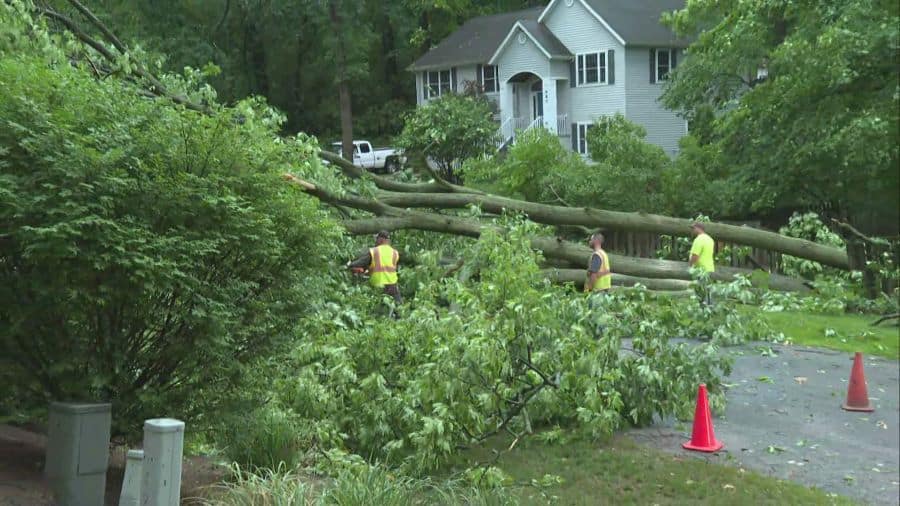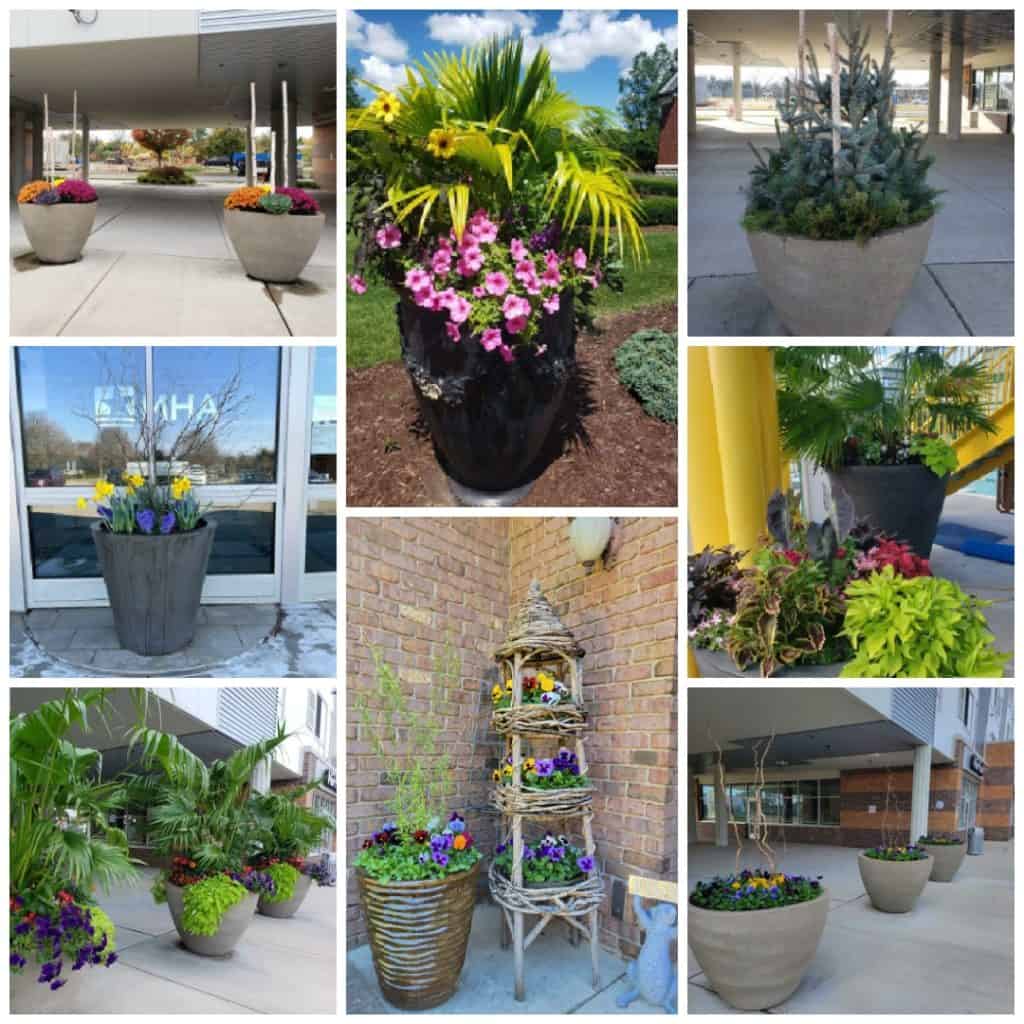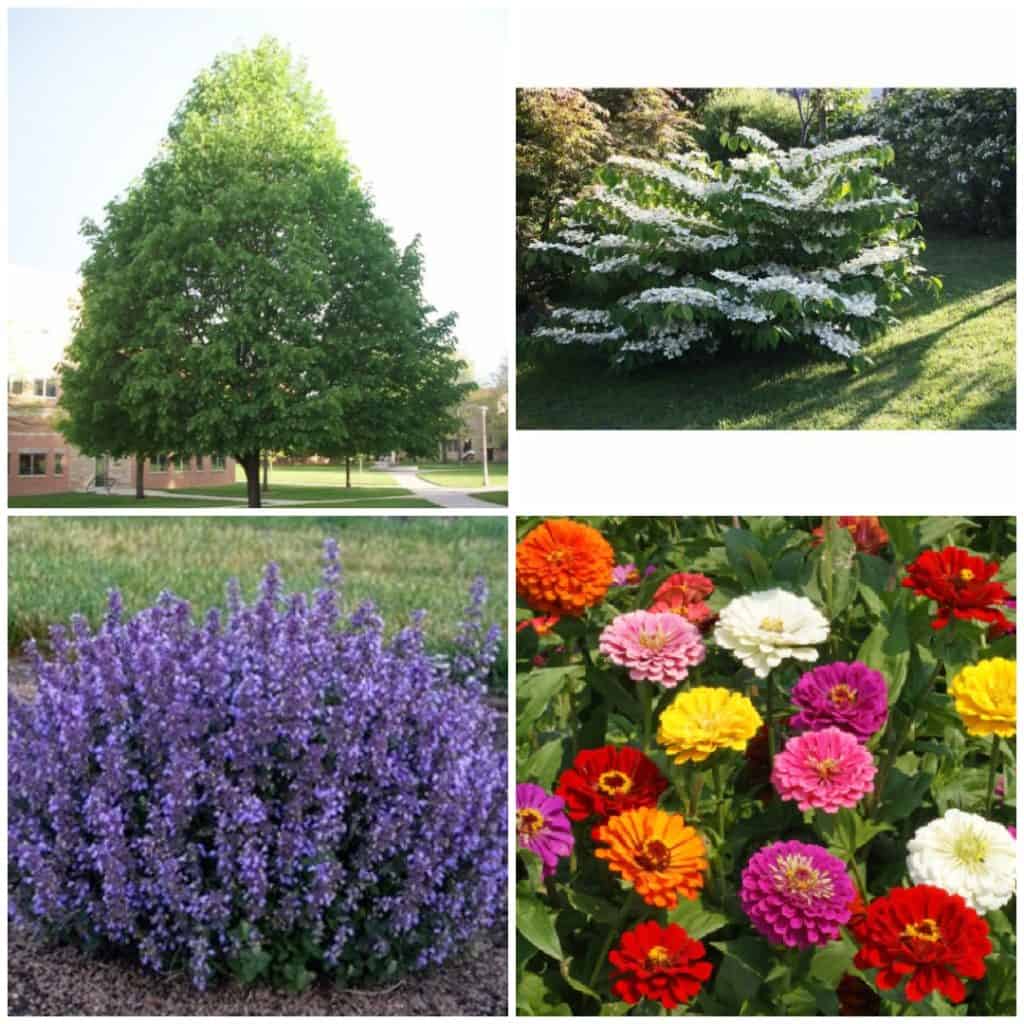What’s Budding

What’s Budding

Weathering Michigan Storms
I have always lived in mid-Michigan. Except for four years or so of college, I have lived in a rural setting on acreage, with mature trees and garden beds. If you believe that our weather has gotten more violent over the last few decades, statistics seem to support that. Higher maximum temperatures, harder rains, more frequent wind bursts strong enough to break tree limbs have become a concern. Recently the Ovid area saw hail the size of golf balls and baseballs.
Though it is not possible to plan an indestructible garden, it is possible to avoid some hazards with thoughtful planning. It is also important to purchase insurance to aid you in repair and replacement when a catastrophic weather event occurs. Be sure you meet with your agent at your home to be sure all your questions are answered, and that the insurance company has all the information needed to appropriately cover any losses in your garden as well as storage structures and your home.
Don’t assume that fences, pergolas, greenhouses or cold frames are covered if they aren’t specifically named in the policy. Flood insurance is a separate coverage. Check flood maps to see if you are at risk and what coverage may be needed. Be sure you are insured before catastrophe strikes.
When planning to add features, think about how they would be impacted by potential flooding or a downed tree, and decide in advance if there are older, weak or poorly-placed trees or other features which need to be removed or stabilized.
When ground is soaked by rain, some trees will become prone to literally tipping over with roots up and out of the ground, especially spruce trees. Many trees will lose smaller limbs, but weak wooded trees with narrow angles of limb attachment may literally split off huge and dangerous sections of wood.
If planning extensive fencing, adding a pergola or another feature, or you are putting an addition on the home, schedule any needed tree pruning or removal beforehand.
I recently added a garden cottage, and the process began with clearing a small area of existing undergrowth and trees. We removed many small volunteer walnuts and a few Chinese elms, while leaving two larger oaks and a maple. An architect who was consulted for a specific question after construction began chiding me for not siting the building at the highest and most visible point of the garden. I explained that my goal wasn’t to see or be seen by the neighbors, but to see the garden. My site selection carefully considered water flow in rain events. By offsetting the house and the cottage, areas of view and privacy were combined, and I can continue to add more planted elements over time.
At least once a year, examine all your trees for signs of stress, disease or cracks in bark or limbs. Has foliage overgrown roofs or gutters? Are branches brushing against siding or downspouts when high winds come? Are climbing vines damaging the structures, bricks, or siding that carry them? Look carefully behind the foliage. When you are outside and the wind is blowing, do you hear creaking ? That may be the sound of limbs that have cracked or that are rubbing against one another and need your attention on a calm day.
Do an annual walk about in terms of drainage and waterflow. Are there areas where water stands after rain? Perhaps a drain has become clogged by soil or roots? Does water seep into the basement, wash out along the drive or overflow the gutters? Have a professional take a look and make recommendations before serious damage is done.
When high winds are expected, take a few moments to secure garden furniture, wildlife feeders and decorative items that might blow loose in the storm. Move vehicles under cover when possible, and secure trash and recycling containers so they don’t damage other objects or spread materials across the landscape.

On the Green Side

Four Seasons of Outdoor Color
Want to have a bright spot of garden color all year round? Consider an exterior planter for the front entrance, back deck or balcony. Start with a weatherproof planter with drainage holes and a drainage layer such as pea gravel, topped by a square of landscape fabric. Then a deep layer of pasteurized potting soil almost to the rim. Terra cotta and ceramics are pretty, but you want concrete, fiberglass, plastic or resin, so freezing and thawing can be endured in all seasons and for several years.
In the winter, the planter should be filled with fresh cut branches of pine, fir, cedar, holly, or juniper. Mix 2-3 varieties for great texture and body. When you put the greens in for the holidays, water them well to saturate the soil, firm the branches into place and ideally freeze the soil into a block. Usually at the January thaw you will remove any holiday themed décor you inserted, and perhaps add some white branches or red twig dogwood to get through the rest of the snowy months.
By March, as we get some warmer and sunnier days, plunge a pot or three of daffodils or tulips into the soil from which you have removed most of the greens. Add some pussy willow or forsythia branches to the planter, so they can open as the weather prompts them. By April, remove these early spring bulbs and plant in another garden spot for flowers the following year. Plant cheery pansies with a few branches of curly willow in the planter. Be sure to keep them watered when the weather is warm or dry, and keep the spent blooms picked off to keep new flowers coming.
By late May or early June, the danger of frost is past, and the planter can be filled with your favorite summer beauties. Tropical, classic summer flowers, or exotics. Choose an upright “thriller” for the center, colorful “fillers” in 2-3 varieties for around the soil surface, and some vining “spillers” for the edges in 3-5 spots. Plant the soil full, water well and use a slow-release fertilizer at planting, following label directions.
If you have a spot to plant the spring pansies in a shady location, they will re-bloom in fall, and can be moved back into the pot, or into the ground. The curly willow may have rooted, and it too can be planted in the ground, but be aware that willow trees love water and can wreak havoc when planted too near to waterlines, drains or buildings. That 3’ stick can become a 40’ tree in a few years.
By September, the summer planting will be full and luxuriant, but it will be time to move into an autumn look. If your central thriller was a grass or cordyline, it can remain, but take out all plants that are sensitive to cold. Add mums, asters, flowering kale, snapdragons, pansies or violas to complete a fall look. You can use birch poles or bamboo rods for central height and drama if needed. By November, it will be time for the winter look once again.
Digging In

Drought Tolerant Plants
Ask any gardener and they will tell you stories of their watering woes. Extended rain-free periods are often the rule rather than the exception for most summers in Michigan, many gardeners are replacing their water-hungry plants to those that will thrive with little irrigation, choosing to work with the ever changing climate rather than fight it.
Often drought tolerant plants have a unique leaf structure. Fine lacy foliage has reduced leaf surface which means less water loss through surface evaporation. Thick, succulent or waxy leaves store more moisture. And, hairy or fuzzy leaves keep moisture trapped at the leaf surface. Many drought tolerant plants also have deep roots that seek moisture well below the surface, while others send up masses of fine feeder roots to collect moisture available at the surface. Leaf curl and leaf scorch are often signs of drought stress. Here is a list of my favorite drought tolerant plants.
| Trees | Shrubs | Perennials | Annuals |
| Honeylocust | Chokeberry | Yarrow | Portulaca |
| Ginko | Sumac | Catmint | Salvia |
| Redbud | Forsythia | Coneflower | Lantana |
| Japanese Lilac | Ninebark | Coreopsis | Zinnia |
| Linden | Spirea | Lavender | Dusty Miller |
| Concolor Fir | Viburnum | Russian Sage | Nasturtium |
| Crabapple | Burning Bush | Sedum | Purple Heart |

The Buzz

What Would You Like to Make and Take?
During the pandemic, our classes went from in-person to virtual. We were still able to provide a shared experience, social interaction and the satisfaction of creating something unique. People could pick up kits at our office, or kits were delivered to the participants for an extra fee. As more of the population is fully vaccinated and the weather warms to permit us to work with the overhead doors open, we are able to offer safe shared experiences for up to a half dozen people in our drive lane. We hope to be back to fully in person later this year, but in the interim, we are able to customize projects with making small moss walls, terrariums, dish gardens, floral arrangements or fairy gardens. We can even do a hybrid with six participants in person and the rest virtual. All our project leaders are fully vaccinated. Let us know what sort of project you would like to plan for your group.
Copyright © The Plant Professionals